
100 Must-Read Books About The History of Medicine
A friend of mine, in his third or fourth year of med school at the time, once told me that doctors are just highly paid mechanics. I don’t think that’s quite true because our bodies are more than machines, they’re how we experience the world. The history of medicine therefore touches on a lot more than the facts of anatomy and physiology. Bodies are subject to law, culture, desire, politics, and more. The maintenance of bodies always intersects with other, bigger questions.
I got interested in the history of medicine because I wanted to understand the dynamic, complicated, emotional, and often unspoken relationship between science, culture, and politics. The books below all grapple with these issues. Plus, there’s more than a little blood and guts (hey, it’s not all big ideas about the nature of existence).
A few notes about this list. Like always, it’s idiosyncratic. I’m a historian of American health and medicine, so the list is very focused on the US in the 19th and 20th centuries. Even the texts that look outside the US tend to focus on Europe and go back only to Ancient Greece. Additionally, I’ve mostly ignored non-western healing traditions. There is a ton of great writing on the history of Ayurvedic medicine, traditional Chinese medicine, and other healing practices, but that will need to wait for another list. To keep this to 100 books, I pretty narrowly focused on the history of scientific (or allopathic) medicine. I love reading historical fiction that features doctors, so I included a handful of my favorites. To be clear about which books are fiction, I marked them with an asterisk (*).
Let’s get to it!
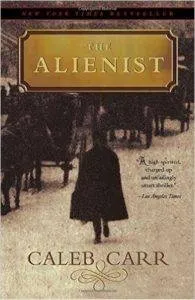 *The Alienist: A Novel (Dr. Lazlo Kreizler Book 1) by Caleb Carr: “The year is 1896, the place, New York City. On a cold March night, New York Times reporter John Schuyler Moore is summoned to the East River by his friend and former Harvard classmate Dr. Laszlo Kreizler, a psychologist, or “alienist.” Fast-paced and gripping, infused with a historian’s exactitude, The Alienist is a novel that conjures up the Gilded Age and its untarnished underside.”
*The Alienist: A Novel (Dr. Lazlo Kreizler Book 1) by Caleb Carr: “The year is 1896, the place, New York City. On a cold March night, New York Times reporter John Schuyler Moore is summoned to the East River by his friend and former Harvard classmate Dr. Laszlo Kreizler, a psychologist, or “alienist.” Fast-paced and gripping, infused with a historian’s exactitude, The Alienist is a novel that conjures up the Gilded Age and its untarnished underside.”- American Pandemic: The Lost Worlds of the 1918 Influenza Epidemic by Nancy K. Bristow: “American Pandemic offers a much-needed corrective to the silence surrounding the 1918 influenza outbreak. It sheds light on the social and cultural history of Americans during the pandemic, uncovering both the causes of the nation’s public amnesia and the depth of the quiet remembering that endured.”
- And the Band Played On: Politics, People, and the AIDS Epidemic by Randy Shilts: “Shilts’s expose revealed why AIDS was allowed to spread unchecked during the early ’80s while the most trusted institutions ignored or denied the threat. One of the few true modern classics, it changed and framed how AIDS was discussed in the following years.”
- Bad Blood: The Tuskegee Syphilis Experiment by James H. Jones: “Bad Blood provides compelling answers to the question of how such a tragedy could have been allowed to occur. Tracing the evolution of medical ethics and the nature of decision-making in bureaucracies, Jones attempted to show that the Tuskegee Study was not, in fact, an aberration but a logical outgrowth of race relations and medical practice in the United States.”
- Bellevue: Three Centuries of Medicine and Mayhem at America’s Most Storied Hospital by David Oshinksy: “Oshinsky chronicles the history of America’s oldest hospital and, in so doing, also charts the rise of New York to the nation’s preeminent city, the path of American medicine from butchery and quackery to a professional and scientific endeavor, and the growth of a civic institution.”
- Bioinsecurities: Disease Interventions, Empire, and the Government of Species by Neel Ahuja: “The book explores efforts to control the spread of Hansen’s disease, venereal disease, polio, smallpox, and HIV through interventions linking the continental United States to Hawai’i, Panamá, Puerto Rico, Cuba, Congo, Iraq, and India in the twentieth and twenty-first centuries.”
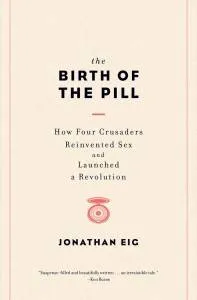 The Birth of the Pill: How Four Crusaders Reinvented Sex and Launched a Revolution by Jonathan Eig: “We know it simply as ‘the pill,’ yet its genesis was anything but simple. Jonathan Eig’s masterful narrative revolves around four principal characters: the fiery feminist Margaret Sanger, Katharine McCormick, Gregory Pincus, and John Rock.”
The Birth of the Pill: How Four Crusaders Reinvented Sex and Launched a Revolution by Jonathan Eig: “We know it simply as ‘the pill,’ yet its genesis was anything but simple. Jonathan Eig’s masterful narrative revolves around four principal characters: the fiery feminist Margaret Sanger, Katharine McCormick, Gregory Pincus, and John Rock.”- Black Man in a White Coat: A Doctor’s Reflections on Race and Medicine by Damon Tweedy: “In this powerful, moving, and deeply empathic memoir, Tweedy explores the challenges confronting black doctors, and the disproportionate health burdens faced by black patients, ultimately seeking a way forward to better treatment and more compassionate care.”
- Black Women in White: Racial Conflict and Cooperation in the Nursing Profession, 1890-1950 by Darlene Clark Hine: “Hine examines the professionalization of black nurses through institutional developments in hospitals, training schools, and nursing organizations. Comparing and contrasting this growth to white counterparts, she explores barriers of race and gender stereotyping.”
 Blood Sugar: Racial Pharmacology and Food Justice in Black America by Anthony Ryan Hatch: “Hatch argues that the syndrome represents another, very real crisis and that its advent signals a new form of ‘colorblind scientific racism’—a repackaging of race within biomedical and genomic research.”
Blood Sugar: Racial Pharmacology and Food Justice in Black America by Anthony Ryan Hatch: “Hatch argues that the syndrome represents another, very real crisis and that its advent signals a new form of ‘colorblind scientific racism’—a repackaging of race within biomedical and genomic research.”- Blood Work: A Tale of Medicine and Murder in the Scientific Revolution by Holly Tucker: “A riveting exposé of the fierce debates, deadly politics, and cutthroat rivalries behind the first transfusion experiments, Blood Work takes us from dissection rooms in palaces to the streets of Paris, providing an unforgettable portrait of an era that wrestled with the same questions about morality and experimentation that haunt medical science today.”
- Blood: An Epic History of Medicine and Commerce by Douglas Starr: “Here is the sweeping story of a substance that has been feared, revered, mythologized, and used in magic and medicine from earliest times—a substance that has become the center of a huge, secretive, and often dangerous worldwide commerce.”
- Bodies of Knowledge: Sexuality, Reproduction, and Women’s Health in the Second Wave by Wendy Kline: In Bodies of Knowledge, Kline considers the ways in which ordinary women worked to position the female body at the center of women’s liberation.
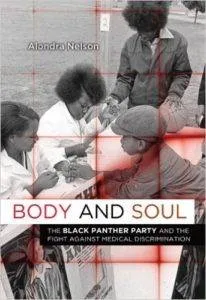 Body and Soul: The Black Panther Party and the Fight against Medical Discrimination by Alondra Nelson: “The Black Panther Party’s health activism—its network of free health clinics, its campaign to raise awareness about genetic disease, and its challenges to medical discrimination—was an expression of its founding political philosophy and also a recognition that poor blacks were both under-served by mainstream medicine and overexposed to its harms.”
Body and Soul: The Black Panther Party and the Fight against Medical Discrimination by Alondra Nelson: “The Black Panther Party’s health activism—its network of free health clinics, its campaign to raise awareness about genetic disease, and its challenges to medical discrimination—was an expression of its founding political philosophy and also a recognition that poor blacks were both under-served by mainstream medicine and overexposed to its harms.”- A Body of Work: An Anthology of Poetry and Medicine edited by Corinna Wagner and Andy Brown: “This collection includes poems by writers from the dawn of Enlightenment to the 21st Century and explores changing attitudes to medicine, health and the body.”
- Breathing Race into the Machine: The Surprising Career of the Spirometer from Plantation to Genetics by Lundy Braun: “Braun traces the little-known history of the spirometer to reveal the social and scientific processes by which medical instruments have worked to naturalize racial and ethnic differences, from Victorian Britain to today.”
- Bring Out Your Dead: The Great Plague of Yellow Fever in Philadelphia in 1793 by J.H. Powell: “In 1793, a disastrous plague of yellow fever paralyzed Philadelphia, killing thousands of residents and bringing the nation’s capital city to a standstill. In this psychological portrait of a city in terror, J. H. Powell presents a penetrating study of human nature revealing itself.”
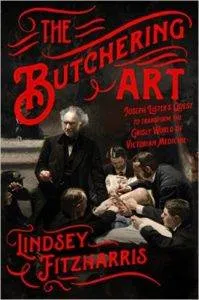 The Butchering Art: Joseph Lister’s Quest to Transform the Grisly World of Victorian Medicine by Lindsey Fitzharris: “This gripping story reveals the shocking world of nineteenth-century surgery and shows how it was transformed by advances made in germ theory and antiseptics between 1860 and 1875.”
The Butchering Art: Joseph Lister’s Quest to Transform the Grisly World of Victorian Medicine by Lindsey Fitzharris: “This gripping story reveals the shocking world of nineteenth-century surgery and shows how it was transformed by advances made in germ theory and antiseptics between 1860 and 1875.”- The Calendar of Loss: Race, Sexuality, and Mourning in the Early Era of Aids by Dagmawi Woubshet: “His world view colored by growing up in 1980s Ethiopia, where death governed time and temperament, Dagmawi Woubshet offers a startlingly fresh interpretation of melancholy and mourning during the early years of the AIDS epidemic.”
- The Cancer Journals by Audre Lorde: “Moving between journal entry, memoir, and exposition, Audre Lorde fuses the personal and political as she reflects on her experience coping with breast cancer and a radical mastectomy.”
- Choice and Coercion: Birth Control, Sterilization, and Abortion in Public Health and Welfare by Johanna Schoen: “In this book, Schoen situates North Carolina’s reproductive politics in a national and global context. Widening her focus to include birth control, sterilization, and abortion policies across the nation, she demonstrates how each method for limiting unwanted pregnancies had the potential both to expand and to limit women’s reproductive choices.”
- The Cholera Years: The United States in 1832, 1849, and 1866 by Charles Rosenberg: “Carefully documented, full of descriptive detail, yet written with an urgent sense of the drama of the epidemic years, this narrative is as absorbing for general audiences as it is for the medical historian.”
- Classrooms and Clinics: Urban Schools and the Protection and Promotion of Child Health, 1870-1930 by Richard Meckel: This “is the first book-length assessment of the development of public school health policies from the late nineteenth century through the early years of the Great Depression.”
- Contagious Divides: Epidemics and Race in San Francisco’s Chinatown by Nayan Shah: “Examining the cultural politics of public health and Chinese immigration in San Francisco, this book looks at the history of racial formation in the U.S. by focusing on the development of public health bureaucracies.”
- Dangerous Pregnancies: Mothers, Disabilities, and Abortion in Modern America by Leslie J. Reagan: “Dangerous Pregnancies tells the largely forgotten story of the German measles epidemic of the early 1960s… [that] would ultimately transform abortion politics, produce new science, and help build two of the most enduring social movements of the late twentieth century–the reproductive rights and the disability rights movements.”
- The Deadly Truth: A History of Disease in America by Gerald Gorb: “chronicles the complex interactions between disease and the peoples of America from the pre-Columbian world to the present. Grob’s ultimate lesson is stark but valuable: there can be no final victory over disease.”
- The Demon Under the Microscope: From Battlefield Hospitals to Nazi Labs, One Doctor’s Heroic Search for the World’s First Miracle Drug by Thomas Hager: “Sulfa: the first antibiotic. In The Demon Under the Microscope, Thomas Hager chronicles the dramatic history of the drug that shaped modern medicine.”
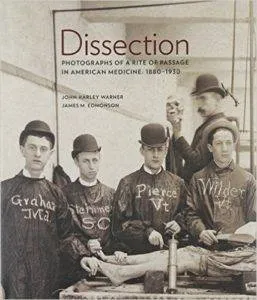 Dissection: Photographs of a Rite of Passage in American Medicine 1880-1930 edited by John Harley Warner and James M. Edmonson: “From the advent of photography in the 19th and into the 20th century, medical students, often in secrecy, took photographs of themselves with the cadavers that they dissected: their first patients. Featuring 138 of these historic photographs and illuminating essays by two experts on the subject, Dissection reveals a startling piece of American history.”
Dissection: Photographs of a Rite of Passage in American Medicine 1880-1930 edited by John Harley Warner and James M. Edmonson: “From the advent of photography in the 19th and into the 20th century, medical students, often in secrecy, took photographs of themselves with the cadavers that they dissected: their first patients. Featuring 138 of these historic photographs and illuminating essays by two experts on the subject, Dissection reveals a startling piece of American history.”- Doctor Daniel Hale Williams in Twas the Night of a Miracle by Karen Clopton-Dunson: “In the picture book, Doctor Daniel Hale Williams in Twas the Night of a Miracle, the author playfully retells the events that lead to the first successful open heart surgery, performed by Dr. Daniel Hale Williams.”
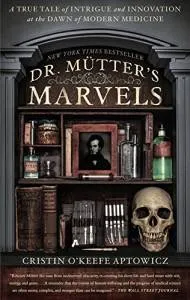 Dr. Mutter’s Marvels: A True Tale of Intrigue and Innovation at the Dawn of Modern Medicine by Cristin O’Keefe Aptowicz: “A mesmerizing biography of the brilliant and eccentric medical innovator who revolutionized American surgery and founded the country’s most famous museum of medical oddities.”
Dr. Mutter’s Marvels: A True Tale of Intrigue and Innovation at the Dawn of Modern Medicine by Cristin O’Keefe Aptowicz: “A mesmerizing biography of the brilliant and eccentric medical innovator who revolutionized American surgery and founded the country’s most famous museum of medical oddities.”- Dying in the City of the Blues: Sickle Cell Anemia and the Politics of Race and Health by Keith Wailoo: “This groundbreaking book chronicles the history of sickle cell anemia in the United States, tracing its transformation from an ‘invisible’ malady to a powerful, yet contested, cultural symbol of African American pain and suffering.”
- Early Black American Leaders in Nursing: Architects for Integration and Equality by Althea T. Davis: “In celebrating the history of the black nursing experience, the author (an RN and EdD) relates the role model-worthy biographies of three Nursing Hall of Fame women: Mary Eliza Mahoney, Martha Minerva Franklin, and Adah Belle Samuels Thoms.”
- The Emperor of All Maladies: A Biography of Cancer by Siddhartha Mukherjee: “[This book] is a magnificent, profoundly humane “biography” of cancer—from its first documented appearances thousands of years ago through the epic battles in the twentieth century to cure, control, and conquer it to a radical new understanding of its essence.”
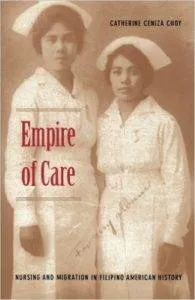 Empire of Care: Nursing and Migration in Filipino American History by Catherine Ceniza Choy: “Empire of Care brings to the fore the complicated connections among nursing, American colonialism, and the racialization of Filipinos. Choy challenges celebratory narratives regarding professional migrants’ mobility by analyzing the scapegoating of Filipino nurses during difficult political times, the absence of professional solidarity between Filipino and American nurses, and the exploitation of foreign-trained nurses through temporary work visas.”
Empire of Care: Nursing and Migration in Filipino American History by Catherine Ceniza Choy: “Empire of Care brings to the fore the complicated connections among nursing, American colonialism, and the racialization of Filipinos. Choy challenges celebratory narratives regarding professional migrants’ mobility by analyzing the scapegoating of Filipino nurses during difficult political times, the absence of professional solidarity between Filipino and American nurses, and the exploitation of foreign-trained nurses through temporary work visas.”- Examining Tuskegee: The Infamous Syphilis Study and Its Legacy by Susan M. Reverby: “This is a comprehensive analysis of the notorious study of untreated syphilis among African American men, who were told by U. S. Public Health Service doctors that they were being treated, not just watched, for their late-stage syphilis. With rigorous clarity, Reverby investigates the study and its aftermath from multiple perspectives and illuminates the reasons for its continued power and resonance in our collective memory.”
- Extraordinary Bodies: Figuring Physical Disability in American Culture and Literature by Rosemarie Garland Thomson: This book “inaugurates a new field of disability studies by framing disability as a minority discourse rather than a medical one, revising oppressive narratives and revealing liberatory ones.”
- Fasting Girls: The History of Anorexia Nervosa by Joan Jacobs Brumberg: “Fasting Girls presents a history of women’s food-refusal dating back as far as the sixteenth century. Incisive, compassionate, illuminating, Fasting Girls offers real understanding to victims and their families, clinicians, and all women who are interested in the origins and future of this complex, modern, and characteristically female disease.”
- Fevered Lives: Tuberculosis in American Culture since 1870 by Katherine Ott: “Consider two polar images of the same medical condition: the pale and fragile Camille ensconced on a chaise in a Victorian parlor, daintily coughing a small spot of blood onto her white lace pillow, and a wretched poor man in a Bowery flophouse spreading a dread and deadly infection. Now Katherine Ott chronicles how in one century, a romantic, ambiguous affliction of the spirit was transformed into a disease that threatened public health and civic order.”
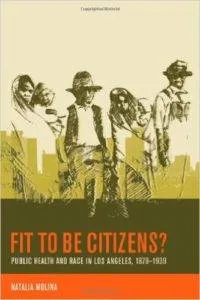 Fit to Be Citizens?: Public Health and Race in Los Angeles, 1879-1939 by Natalia Molina: “Meticulously researched and beautifully written, Fit to Be Citizens? demonstrates how both science and public health shaped the meaning of race in the early twentieth century.”
Fit to Be Citizens?: Public Health and Race in Los Angeles, 1879-1939 by Natalia Molina: “Meticulously researched and beautifully written, Fit to Be Citizens? demonstrates how both science and public health shaped the meaning of race in the early twentieth century.”- *A Free Man of Color (Benjamin January #1) by Barbara Hambly: “It is 1833. In the midst of Mardi Gras, Benjamin January, a Creole physician and music teacher, is playing piano at the Salle d’Orleans when the evening’s festivities are interrupted—by murder.”
- The Gene: An Intimate History by Siddhartha Mukherjee: “Weaving science, social history, and personal narrative to tell us the story of one of the most important conceptual breakthroughs of modern times, Mukherjee animates the quest to understand human heredity and its surprising influence on our lives, personalities, identities, fates, and choices.”
- The Genealogical Science: The Search for Jewish Origins and the Politics of Epistemology by Nadia Abu El-Haj: “In this book, Nadia Abu El-Haj examines genetic history’s working assumptions about culture and nature, identity and biology, and the individual and the collective.”
- The Ghost Map: The Story of London’s Most Terrifying Epidemic—and How It Changed Science, Cities, and the Modern World by Steven Johnson: “A triumph of multidisciplinary thinking. Johnson illuminates the intertwined histories of the spread of disease, the rise of cities, and the nature of scientific inquiry, offering both a riveting history and a powerful explanation of how it has shaped the world we live in.”
- The Great Mortality: An Intimate History of the Black Death, the Most Devastating Plague of All Time by John Kelly: This is an “extraordinary epic account of the worst natural disaster in European history — a drama of courage, cowardice, misery, madness, and sacrifice that brilliantly illuminates humankind’s darkest days when an old world ended and a new world was born.”
 Health Rights Are Civil Rights: Peace and Justice Activism in Los Angeles, 1963–1978 by Jenna Loyd: “Health Rights Are Civil Rights tells the story of the important place of health in struggles for social change in Los Angeles in the 1960s and 1970s.”
Health Rights Are Civil Rights: Peace and Justice Activism in Los Angeles, 1963–1978 by Jenna Loyd: “Health Rights Are Civil Rights tells the story of the important place of health in struggles for social change in Los Angeles in the 1960s and 1970s.”- Health, Civilization and the State: A History of Public Health from Ancient to Modern Times by Dorthy Porter: “This book examines the social, economic and political issues of public health provision in historical perspective. It outlines the development of public health in Britain, Continental Europe and the United States from the ancient world through to the modern state.”
- Hidden Treasure: The National Library of Medicine by The National Library of Medicine: “Despite more than a century and a half of classification and cataloging, buried in the sheer mass of this collection are wondrous items largely unseen by the public and obscure even to librarians, curators, and historians.”
- A History of Public Health George Rosen: “Since publication in 1958, George Rosen’s classic book has been regarded as the essential international history of public health.”
 How to Survive a Plague: The Inside Story of How Citizens and Science Tamed AIDS by David France: “A riveting, powerful telling of the story of the grassroots movement of activists, many of them in a life-or-death struggle, who seized upon scientific research to help develop the drugs that turned HIV from a mostly fatal infection to a manageable disease.”
How to Survive a Plague: The Inside Story of How Citizens and Science Tamed AIDS by David France: “A riveting, powerful telling of the story of the grassroots movement of activists, many of them in a life-or-death struggle, who seized upon scientific research to help develop the drugs that turned HIV from a mostly fatal infection to a manageable disease.”- Illness as Metaphor and AIDS and Its Metaphors by Susan Sontag: “A cancer patient herself when she was writing the book, Sontag shows how the metaphors and myths surrounding certain illnesses, especially cancer, add greatly to the suffering of patients and often inhibit them from seeking proper treatment.”
- The Illness Narratives: Suffering, Healing, And The Human Condition by Arthur Kleinman: “Based on twenty years of clinical experience studying and treating chronic illness, a Harvard psychiatrist and anthropologist argues that diagnosing illness is an art tragically neglected by modern medical training, and presents a compelling case for bridging the gap between patient and doctor.”
- The Illustrations from the Works of Andreas Vesalius of Brussels edited by J. B. deC. M. Saunders and Charles D. O’Malley: “No other source will provide the general reader, bibliophile, art historian, artist, or historian of science and medicine with such complete data on Vesalius and his fabulous anatomical illustrations.”
- Imbeciles: The Supreme Court, American Eugenics, and the Sterilization of Carrie Buck by Adam Cohen: “One of America’s great miscarriages of justice, the Supreme Court’s infamous 1927 Buck v. Bell ruling made government sterilization of ‘undesirable’ citizens the law of the land.”
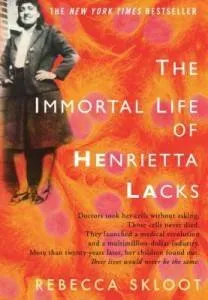 The Immortal Life of Henrietta Lacks by Rebecca Skloot: “This phenomenal New York Times bestseller tells a riveting story of the collision between ethics, race, and medicine; of scientific discovery and faith healing; and of a daughter consumed with questions about the mother she never knew.”
The Immortal Life of Henrietta Lacks by Rebecca Skloot: “This phenomenal New York Times bestseller tells a riveting story of the collision between ethics, race, and medicine; of scientific discovery and faith healing; and of a daughter consumed with questions about the mother she never knew.”- Infectious Fear: Politics, Disease, and the Health Effects of Segregation by Samuel K. Roberts: “For most of the first half of the twentieth century, tuberculosis ranked among the top three causes of mortality among urban African Americans. Roberts Jr. examines how individuals and institutions—black and white, public and private—responded to the challenges of tuberculosis in a segregated society.”
- Infertility: Tracing the History of a Transformative Term by Robin E. Jensen: “Throughout the last century, the inability of women to conceive children has been explained by discrepant views: that women are individually culpable for their own reproductive health problems, or that they require the intervention of medical experts to correct abnormalities.”
- Killing the Black Body: Race, Reproduction, and the Meaning of Liberty by Dorthy Roberts: “In Killing the Black Body, Roberts exposes America’s systemic abuse of Black women’s bodies, from slave masters’ economic stake in bonded women’s fertility to government programs that coerced thousands of poor Black women into being sterilized as late as the 1970s.”
- Laboring Women: Gender and Reproduction in New World Slavery by Jennifer Morgan: “When black women were brought from Africa to the New World as slave laborers, their value was determined by their ability to work as well as their potential to bear children, who by law would become the enslaved property of the mother’s master. In Laboring Women, Morgan examines for the first time how African women’s labor in both senses became intertwined in the English colonies.”
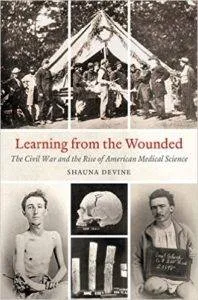 Learning from the Wounded: The Civil War and the Rise of American Medical Science by Shauna Devine: “Examining the work of doctors who served in the Union Medical Department, Devine sheds new light on how their innovations in the midst of crisis transformed northern medical education and gave rise to the healing power of modern health science.”
Learning from the Wounded: The Civil War and the Rise of American Medical Science by Shauna Devine: “Examining the work of doctors who served in the Union Medical Department, Devine sheds new light on how their innovations in the midst of crisis transformed northern medical education and gave rise to the healing power of modern health science.”- Life’s Work: A Moral Argument for Choice by Willie Parker: “An outspoken, Christian reproductive justice advocate and abortion provider (one of the few doctors to provide such services to women in Mississippi and Alabama) pulls from his personal and professional journeys as well as the scientific training he received as a doctor to reveal how he came to believe, unequivocally, that helping women in need, without judgment, is precisely the Christian thing to do.”
- Medical Apartheid: The Dark History of Medical Experimentation on Black Americans from Colonial Times to the Present by Harriet Washington: “Medical Apartheid reveals the hidden underbelly of scientific research and makes possible, for the first time, an understanding of the roots of the African American health deficit. At last, it provides the fullest possible context for comprehending the behavioral fallout that has caused black Americans to view researchers—and indeed the whole medical establishment—with such deep distrust.”
- Medicine: The Definitive Illustrated History from DK: “Medicine tells the fascinating story of the discipline, from ancient times to the present day, charting developments in healing, diagnosis, surgery, and drugs in a vividly visual and accessible format.”
- A Midwife’s Tale: The Life of Martha Ballard, Based on Her Diary, 1785-1812 by Laurel Thatcher Ulrich: “Drawing on the diaries of one woman in eighteenth-century Maine, this intimate history illuminates the medical practices, household economies, religious rivalries, and sexual mores of the New England frontier.”
- The Mold in Dr. Florey’s Coat: The Story of the Penicillin Miracle by Eric Lax: “Credit for penicillin is largely misplaced. This book explores why it was the American labs that won patents on penicillin’s manufacture and drew royalties from its sale.”
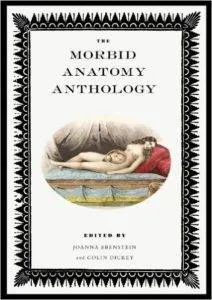 The Morbid Anatomy Anthology edited by Joanna Ebenstein and Colin Dickey: “Since 2008, the Morbid Anatomy Library of Brooklyn, New York, has hosted some of the best scholars, artists and writers working along the intersections of the history of anatomy and medicine, death and the macabre, religion and spectacle.”
The Morbid Anatomy Anthology edited by Joanna Ebenstein and Colin Dickey: “Since 2008, the Morbid Anatomy Library of Brooklyn, New York, has hosted some of the best scholars, artists and writers working along the intersections of the history of anatomy and medicine, death and the macabre, religion and spectacle.”- Mütter Museum Historic Medical Photographs by the College of Physicians of Philadelphia and edited by Laura Lindgren: This book contains “artful images of the museum’s fascinating exhibits shot by contemporary fine art photographers. Here, the focus is on the museum’s archive of rare historic photographs, most of which have never been seen by the public.”
- Native American DNA: Tribal Belonging and the False Promise of Genetic Science Kim TallBear: “How identifying Native Americans is vastly more complicated than matching DNA… TallBear shows how Native American claims to land, resources, and sovereignty that have taken generations to ratify may be seriously—and permanently—undermined.”
- Nature Cures: The History of Alternative Medicine in America by James C. Whorton: “Writing with wit and with fairness to all sides, Whorton offers a fascinating look at alternative health systems such as homeopathy, water cures, Mesmerism, Christian Science, osteopathy, chiropractic, naturopathy, and acupuncture.”
- Nature’s Path: A History of Naturopathic Healing in America by Susan E. Cayleff: “An alternative medical system emphasizing prevention through healthy living, positive mind-body-spirit strength, and therapeutics to enhance the body’s innate healing processes, naturopathy has gained legitimacy in recent years. In Nature’s Path… Cayleff tells the fascinating story of the movement’s nineteenth-century roots.”
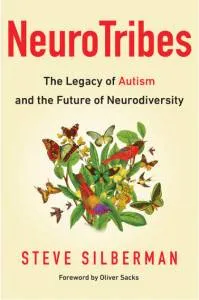 NeuroTribes: The Legacy of Autism and the Future of Neurodiversity by Steve Silberman: “WIRED reporter Steve Silberman unearths the secret history of autism, long suppressed by the same clinicians who became famous for discovering it, and finds surprising answers to the crucial question of why the number of diagnoses has soared in recent years.”
NeuroTribes: The Legacy of Autism and the Future of Neurodiversity by Steve Silberman: “WIRED reporter Steve Silberman unearths the secret history of autism, long suppressed by the same clinicians who became famous for discovering it, and finds surprising answers to the crucial question of why the number of diagnoses has soared in recent years.”- Noxious New York: The Racial Politics of Urban Health and Environmental Justice by Julie Sze: “Sze analyzes the culture, politics, and history of environmental justice activism in New York City within the larger context of privatization, deregulation, and globalization.”
- On Immunity: An Inoculation by Eula Biss: “In this bold, fascinating book, Eula Biss addresses our fear of the government, the medical establishment, and what may be in our children’s air, food, mattresses, medicines, and vaccines.”
- Our Bodies Belong to God: Organ Transplants, Islam, and the Struggle for Human Dignity in Egypt by Sherine F. Hamdy: “This book analyzes the national debate over organ transplantation in Egypt as it has unfolded during a time of major social and political transformation—including mounting dissent against a brutal regime, the privatization of health care, advances in science, the growing gap between rich and poor, and the Islamic revival.”
- Pain: A Political History by Keith Wailoo: “Tracing the development of pain theories in politics, medicine, and law, and legislative and social quarrels over the morality and economics of relief, Wailoo points to a tension at the heart of the conservative-liberal divide.”
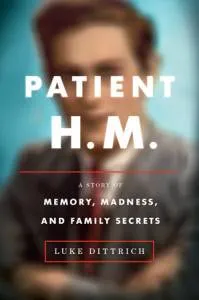 Patient H.M.: A Story of Memory, Madness, and Family Secrets by Luke Dittrich: This book “takes readers inside the old asylums and operating theaters where psychosurgeons, as they called themselves, conducted their human experiments, and behind the scenes of a bitter custody battle over the ownership of the most important brain in the world.”
Patient H.M.: A Story of Memory, Madness, and Family Secrets by Luke Dittrich: This book “takes readers inside the old asylums and operating theaters where psychosurgeons, as they called themselves, conducted their human experiments, and behind the scenes of a bitter custody battle over the ownership of the most important brain in the world.”- Polio: An American Story by David Oshinksy: “Polio tells the gripping story of the polio terror and of the intense effort to find a cure, from the March of Dimes to the discovery of the Salk and Sabin vaccines—and beyond.”
- Pox: An American History by Michael Willrich: “The untold story of how America’s Progressive-era war on smallpox sparked one of the great civil liberties battles of the twentieth century.”
- The Prince of Medicine: Galen in the Roman Empire by Susan P. Mattern: This book “gives us Galen as he lived his life, in the city of Rome at its apex of power and decadence, among his friends, his rivals, and his patients.”
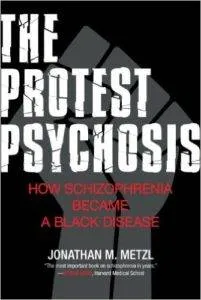 The Protest Psychosis: How Schizophrenia Became a Black Disease by Jonathan Metzl: “A powerful account of how cultural anxieties about race shaped American notions of mental illness. Expertly sifting through a vast array of cultural documents, Metzl shows how associations between schizophrenia and blackness emerged during the tumultuous decades of the 1960s and 1970s.”
The Protest Psychosis: How Schizophrenia Became a Black Disease by Jonathan Metzl: “A powerful account of how cultural anxieties about race shaped American notions of mental illness. Expertly sifting through a vast array of cultural documents, Metzl shows how associations between schizophrenia and blackness emerged during the tumultuous decades of the 1960s and 1970s.”- Quinine: Malaria and the Quest for a Cure That Changed the World by Fiammetta Rocco: “The cure for malaria was quinine, an alkaloid made from the bitter red bark of the cinchona tree. From the quest of the Englishmen who smuggled cinchona seeds out of South America to the way in which quinine opened the door to Western imperial adventure in Asia, Africa, and beyond, and to malaria’s effects even today… Rocco deftly chronicles the story of this historically ravenous disease.”
- Rabid: A Cultural History of the World’s Most Diabolical Virus by Bill Wasik and Monica Murphy: “In this critically acclaimed exploration, journalist Bill Wasik and veterinarian Monica Murphy chart four thousand years of the history, science, and cultural mythology of rabies… from Greek myths to zombie flicks.”
- Remaking the American Patient: How Madison Avenue and Modern Medicine Turned Patients into Consumers by Nancy Tomes: “In a work that spans the twentieth century, Tomes questions the popular—and largely unexamined—idea that in order to get good health care, people must learn to shop for it.”
- Reproducing Race: An Ethnography of Pregnancy as a Site of Racialization by Khiara M. Bridges: “An ethnography of pregnancy and birth at a large New York City public hospital explores the role of race in the medical setting.”
- *The Resurrectionist: A Novel by Matthew Guinn: “With exceptional storytelling pacing and skill, Guinn weaves together past and present to relate a Southern Gothic tale of shocking crimes and exquisite revenge.”
- *The Resurrectionist: The Lost Work of Dr. Spencer Black by E. B. Hudspeth: This novel offers two extraordinary books in one. The first is a fictional biography of Dr. Spencer Black, from a childhood spent exhuming corpses through his medical training, his travels with carnivals, and the mysterious disappearance at the end of his life. The second book is Black’s magnum opus: The Codex Extinct Animalia, a Gray’s Anatomy for mythological beasts—dragons, centaurs, Pegasus, Cerberus—all rendered in meticulously detailed anatomical illustrations.
- Science at the Borders: Immigrant Medical Inspection and the Shaping of the Modern Industrial Labor Force by Amy Fairchild: “Fairchild retells the immigrant story, offering a new interpretation of the medical exam and the role it played in the lives of the 25 million immigrants who entered the US.”
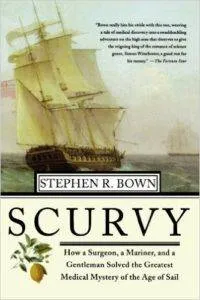 Scurvy: How a Surgeon, a Mariner, and a Gentlemen Solved the Greatest Medical Mystery of the Age of Sail by Stephen R. Bown: “Brimming with tales of ships, sailors, and baffling bureaucracy, Scurvy is a rare mix of compelling history and classic adventure story.”
Scurvy: How a Surgeon, a Mariner, and a Gentlemen Solved the Greatest Medical Mystery of the Age of Sail by Stephen R. Bown: “Brimming with tales of ships, sailors, and baffling bureaucracy, Scurvy is a rare mix of compelling history and classic adventure story.”- Sick from Freedom: African-American Illness and Suffering during the Civil War and Reconstruction by Jim Downs: In this book, “Downs recovers the untold story of one of the bitterest ironies in American history—that the emancipation of the slaves, seen as one of the great turning points in U.S. history, had devastating consequences for innumerable freed people.”
- The Sick Rose: Disease and the Art of Medical Illustration by Richard Barnett: “In the era before color-photography, accurate images were relied upon to teach students and aid diagnosis. The best examples, featured here, are remarkable pieces of art that attempted to elucidate the mysteries of the body and the successive onset of each affliction.”
- The Skull Collectors: Race, Science, and America’s Unburied Dead by Ann Fabian: “From cranial measurements and museum shelves to heads on stakes, bloody battlefields, and the ‘rascally pleasure’ of grave robbing, Fabian paints a lively picture of scientific inquiry in service of an agenda of racial superiority, and of a society coming to grips with both the deadly implications of manifest destiny and the mass slaughter of the Civil War.”
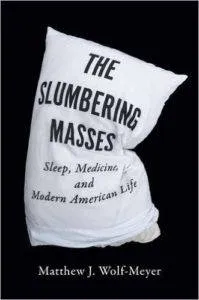 The Slumbering Masses: Sleep, Medicine, and Modern American Life by Matthew J. Wolf-Meyer: This book “addresses the phenomenon of sleep and sleeplessness in the United States, tracing the influence of medicine and industrial capitalism on Americans’ sleeping habits since the nineteenth century.”
The Slumbering Masses: Sleep, Medicine, and Modern American Life by Matthew J. Wolf-Meyer: This book “addresses the phenomenon of sleep and sleeplessness in the United States, tracing the influence of medicine and industrial capitalism on Americans’ sleeping habits since the nineteenth century.”- The Social Transformation of American Medicine: The Rise of a Sovereign Profession and the Making of a Vast Industry by Paul Starr: “Winner of the 1983 Pulitzer Prize and the Bancroft Prize in American History, this is a landmark history of how the entire American health care system of doctors, hospitals, health plans, and government programs has evolved over the last two centuries.”
- Strangers At The Bedside: A History Of How Law And Bioethics Transformed Medical Decision Making by David J. Rothman: “Tracing the revolution that transformed the doctor-patient relationship, this book takes the reader into the laboratory and the examining room, tracing the development of new technologies and social attitudes.”
- The Trial of the Assassin Guiteau: Psychiatry and the Law in the Gilded Age by Charles Rosenberg: “In this brilliant study, Charles Rosenberg uses the celebrated trial of Charles Guiteau, who assassinated President Garfield in 1881, to explore insanity and criminal responsibility in the Gilded Age.”
- The Ugly Laws: Disability in Public by Susan M. Schweik: “In the late-nineteenth and early-twentieth centuries, municipallaws targeting ‘unsightly beggars’ sprang up in cities across America. Seeming to criminalize disability and thus offering a visceral example of discrimination, these “ugly laws” have become a sort of shorthand for oppression in disability studies, law, and the arts.”
- This Way Madness Lies: The Asylum and Beyond by Mike Jay: “A compelling and evocatively illustrated exploration of the evolution of the asylum, and its role in society over the course of four centuries.”
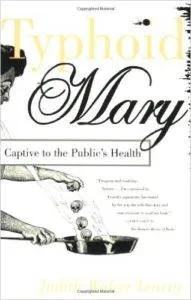 Typhoid Mary: Captive to the Public’s Health by Judith Walzer Leavitt: “This book tells the remarkable story of Mary Mallon—the real Typhoid Mary. Combining social history with biography, historian Judith Leavitt re-creates early-twentieth-century New York City, a world of strict class divisions and prejudice against immigrants and women.”
Typhoid Mary: Captive to the Public’s Health by Judith Walzer Leavitt: “This book tells the remarkable story of Mary Mallon—the real Typhoid Mary. Combining social history with biography, historian Judith Leavitt re-creates early-twentieth-century New York City, a world of strict class divisions and prejudice against immigrants and women.”- Vaccinated: One Man’s Quest to Defeat the World’s Deadliest Diseases by Paul Offit: “Maurice Hilleman is the father of modern vaccines… Offit’s rich and lively narrative details Hilleman’s research and experiences as the basis for a larger exploration of the development of vaccines, covering two hundred years of medical history and traveling across the globe in the process.”
- War’s Waste: Rehabilitation in World War I America by Beth Linker: “Linker’s narrative moves from the professional development of orthopedic surgeons and physical therapists to the curative workshops, or hospital spaces where disabled soldiers learned how to repair automobiles as well as their own artificial limbs. The story culminates in the postwar establishment of the Veterans Administration, one of the greatest legacies to come out of the First World War.”
- Yellow Fever and the South by Margaret Humphreys: “Humphreys explores the ways in which this tropical disease hampered commerce, frustrated the scientific community, and eventually galvanized local and federal authorities into forming public health boards.”
Did I forget a book you love on the history of medicine? Tell me in the comments.